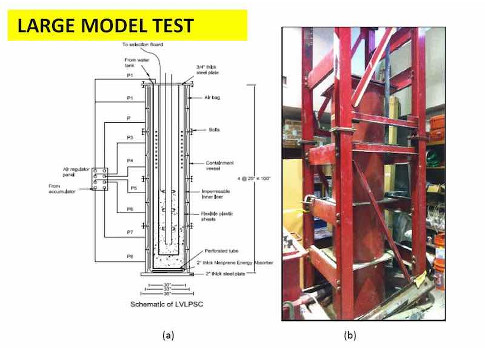Smart cement revolutionizes well casings
Cumaraswamy “Vipu” Vipulanandan, professor of civil and environmental engineering and director of the Center for Innovative Grouting Materials and Technology at the University of Houston (UH) created smart cement. It has great potential in the oil and gas industry with revolutionary properties beyond the oil-well cement currently used.
 The novel augmentation of cementing the oil-well casing has the potential to change the oil and gas industry, as well as revolutionize the construction industry. After drilling a borehole, a metal casing is inserted and held in place with standard cement, which is expected to adhere to the metal and bond with the geological formation. A typical cement casing is about 2 in. thick and it is expected to stay in place for about 30 years or more based on the service life of the well. The challenge producers have been facing over the course of 30 years is that there is no way to interface with the cement or know how it is holding up inside the well. Furthermore, producers face many extreme factors, such as varying temperatures, very high pressures, and corrosive seawater. Monitoring overall well health is another major challenge, especially in offshore deep water.
The novel augmentation of cementing the oil-well casing has the potential to change the oil and gas industry, as well as revolutionize the construction industry. After drilling a borehole, a metal casing is inserted and held in place with standard cement, which is expected to adhere to the metal and bond with the geological formation. A typical cement casing is about 2 in. thick and it is expected to stay in place for about 30 years or more based on the service life of the well. The challenge producers have been facing over the course of 30 years is that there is no way to interface with the cement or know how it is holding up inside the well. Furthermore, producers face many extreme factors, such as varying temperatures, very high pressures, and corrosive seawater. Monitoring overall well health is another major challenge, especially in offshore deep water.
To solve this problem, Vipulanandan is trying to make the cement more like human skin. Skin separates the inside of the body from the environment in addition to being very thin and tactically responsive. "It’s sort of like your skin. When someone touches your skin, you can feel it. You can feel the pressure," Vipulanandan said. To give cement sensing properties, piezo-resistive material is added to the cement. This small amount of material makes the smart cement 700 times more sensitive than the cement that is currently used. Parameters such as stresses, contamination levels, cracks, fluid loss, and temperatures can be monitored to determine how these factors change over time and in this environment.
 To process these data from the smart cement, the "brain" must be developed. Two wires are placed in the cement to transmit changes in the well casing. Several laboratory tests are being performed to demonstrate the concept of real-time monitoring. Also, a large field test is being planned at the UH Energy Research Park.
To process these data from the smart cement, the "brain" must be developed. Two wires are placed in the cement to transmit changes in the well casing. Several laboratory tests are being performed to demonstrate the concept of real-time monitoring. Also, a large field test is being planned at the UH Energy Research Park.
Smart cement’s applications outside of O&G
This concept of developing and using highly sensitive material such as smart cement can also be used in the construction industry for better quality control and minimizing failures. The smart cement concept can be used to maintain and repair billions of dollars worth of infrastructure including highways, bridges, airports, buildings, and pipelines.
– Cumaraswamy Vipulanandan (Vipu) is a professor of civil and environmental engineering at the UH. He is the Director of the Center for Innovative Grouting Materials and Technology and the Texas Hurricane Center for Innovative Technology at the university. Eric R. Eissler is editor-in-chief of Oil and Gas Engineering, CFE Media, eeissler@cfemedia.com.
Technology highlights
The smart cement system can sense changes in curing environment, contamination, temperature, and pressure, in real time and forward this information to the user. This study is being funded by the U.S. Dept. of Energy with a $2.6 million grant and managed by National Energy Technology Laboratory and Research Partnership to Secure Energy for America.
Do you have experience and expertise with the topics mentioned in this content? You should consider contributing to our CFE Media editorial team and getting the recognition you and your company deserve. Click here to start this process.


